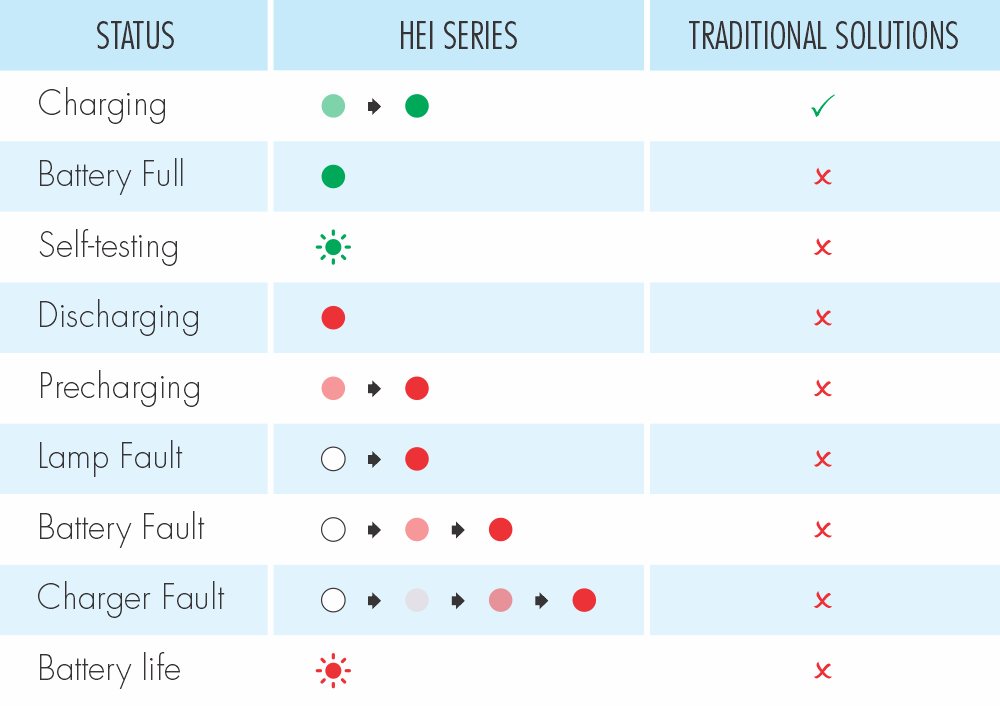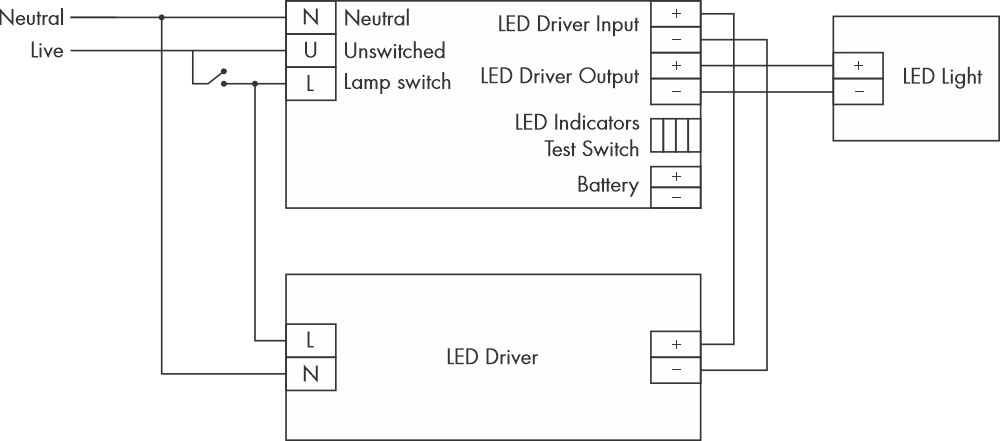Universal Emergency Drivers for DC LED Lights
Selftest Version
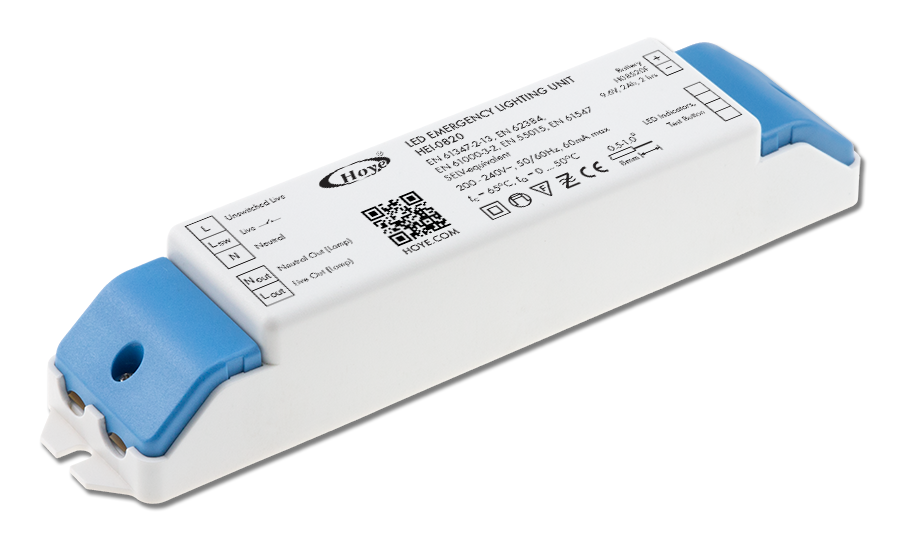
Features
-
Automatic Testing (IEC 62034 Compliant): Ensures safety and reduces maintenance.
-
Universal Compatibility: With the Universal Emergency Driver, one driver works with constant voltage or constant current LED lights regardless wattage, eliminating the need for specific emergency drivers for different LED lights.
-
Constant Brightness: Maintains constant light output during emergency even as the battery depletes.
- Consistent Battery Life: Constant output power provides more consistent battery life.
-
Safety Protections: Protects LED tubes from overcurrent, open-circuit and flickering. It also shuts down to safeguard the charger under overcurrent or short-circuit conditions.
-
LED Status Indicators: Bi-color LED lights provide rich system status for easy troubleshooting.
-
Smart Charging: Fast and trickle charging work together to minimize charging time, maximize battery life, and reduce power consumption. Automatic revival restores drained batteries, and -ΔV termination prevents overcharging.
-
Broad Battery Compatibility: Supports NiCd, NiMH, and LiFePO4 rechargeable batteries.
Technical Data
| Rated supply voltage | 220-240 VAC (-10%, +10%) |
| Supply frequency | 50-60 Hz |
| Changeover time | <0.3 Sec |
| Recharge time | <6 hrs |
| Battery cut-off voltage | <1.0V/cell |
| Ambient temp (ta) | 0 … +50°C |
| Standby power | 0.9W |
| Max. case temp (tc) | 65°C |
| Weight | 140 g |
| Supported lamp type | T5/T8 AC LED tubes |
| Functional Test | Monthly 10 sec test |
| Duration Test | Yearly rated duration test |
| Dimension L x W x H | 190 x 40 x 32mm |
Automatic Test System
The system supports an automatic test system as per IEC 62034:2012 – Automatic test systems for battery powered emergency escape lighting. It also complies with Hong Kong FSD latest requirements (HK FSD, Technical Guidance May 2021 and FSD Circular Letter No. 5/2021, PPA/104(A), 5th Revision). There are two types of tests:
Functional test is performed once a month for a period of 10 seconds. It checks the integrity of the system, changeover, lamp operation and battery supply.
Duration test is performed once a year. It checks the battery capacity within the rated duration of emergency operation.
- Once every month a functional test in accordance with BS EN 50172 not longer than 10% of rated duration should be carried out.
- Once every twelve months a full rated duration test, should be carried out and the results should be entered in a register.
- The luminaire should be functioning properly to maintain the stipulated lighting level and the normal power supply should be restored after the test.
- If automatic testing devices are used, the above item a – c should be complied with.
Predictive Test
The duration test time is scheduled by a predictive test feature.
A predictive test optimizes the scheduling of emergency lighting duration tests. The system monitors lamp switch activity (on/off) to identify periods of non-occupancy. When a suitable vacancy is detected, the test is automatically scheduled to begin during this non-presence window. This approach minimizes disruption to occupants while ensuring timely completion of the test.

Constant Power – A Universal Solution
Unlike traditional solutions that require specific designs to drive different types and wattages of LED lights, the innovative constant power output breaks through all the limitations. It offers unmatched versatility, allowing a single unit to drive LEDs with
- Constant voltage
- Constant current
- Wide range of wattages
This eliminates the need for multiple emergency lighting models, and simplify inventory with a single unit that adapts to existing LED lights. The future-proof design also ensures compatibility with future LED replacements.
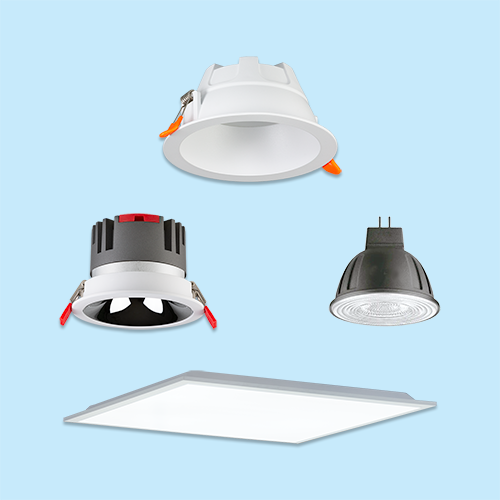

Test Button with Lamp Compatibility Test
The test button performs normal changeover, but also conducts lamp compatibility test. If lamp is not compatible or defective, it will switch off lamp within 3 seconds. For compatible lamps, it will keep running while test button is pressed.
Constant Brightness Output
The system regulates lamp power and maintains consistent brightness output. This guarantees lamp remains bright throughout emergencies. As a result, battery life also remains consistent regardless of lamp type used.
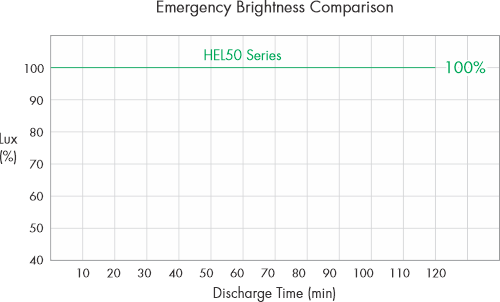
Safety Protections
The system is designed to ensure the unit will function properly in all kinds of fault conditions, including lamp faults, unstable lamp operation, and charger faults. These protections guarantee high reliability and a long lifespan of the uint.
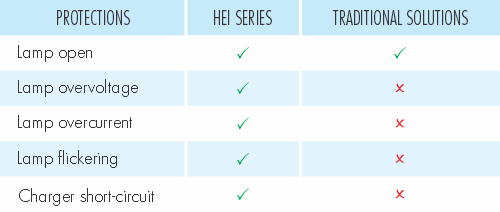
Wiring Diagrams
HEI series are compatible with both single-ended and double-ended lamps.
Each unit can drive up to two lamps. If two lamps are connected, they must be of identical brands and models. The total combined output power of the lamps and discharge time will remain the same.
* Optional lamp
Dimensions
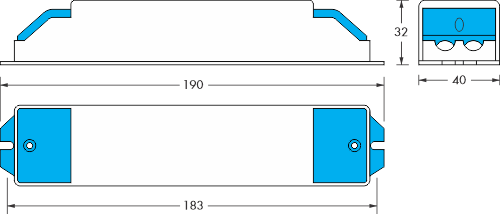
Battery Types
| NiCd | NiMH | Remarks |
| H08A10S2 | M08A10S2 | Stacked |
| H08A10S | M08A10S | Stick |
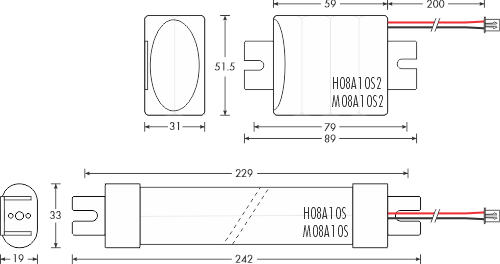
Compliances
- FSD Circular Letter No. 1/2006: PPA-104(A) 5th Rev Fire Safety Standards for Emergency Lighting
- BS 5266 part 1 Emergency lighting. Code of practice for the emergency lighting of premises
- EN 1838 2013 Lighting applications. Emergency lighting
- EN 61347-2-7 Lamp controlgear - Part 2-7: Particular requirements for electric source for safety services (ESSS) supplied electronic controlgear for emergency lighting (self-contained)
- EN 55015 Limits and methods of measurement of radio disturbance characteristics of electrical lighting and similar equipment
- EN 61000-3-2 Electromagnetic compatibility (EMC). Limits. Limits for harmonic current emissions (equipment input current ≤ 16 A per phase)
- EN 61000-3-3 Electromagnetic compatibility (EMC). Limits. Limitation of voltage changes, voltage fluctuations and flicker in public low-voltage supply systems, for equipment with rated current ≤ 16 A per phase and not subject to conditional connection
- EN 61547 Equipment for general lighting purposes. EMC immunity requirements
Ordering Information
| Model | Battery Model |
Battery Type |
Output Power (W) |
Power at Charging (W) |
Power at Standby (W) |
Discharge Hours (W) |
|---|---|---|---|---|---|---|
| HEL50-0810-2-ST | H08S10S | NiCd (9.6V, 1Ah) | 2.8 | 3.0 | 0.9 | 2 |
| HEL50-0820-2-ST | H08S10S2 | NiCd (9.6V, 1Ah) | 2.8 | 3.0 | 0.9 | 2 |
| HEL50-0810-2-ST | M08S10S | NiMH (9.6V, 1Ah) | 2.8 | 3.0 | 0.9 | 2 |
| HEL50-0810-2-ST | M08S10S2 | NiMH (9.6V, 1Ah) | 2.8 | 3.0 | 0.9 | 2 |
